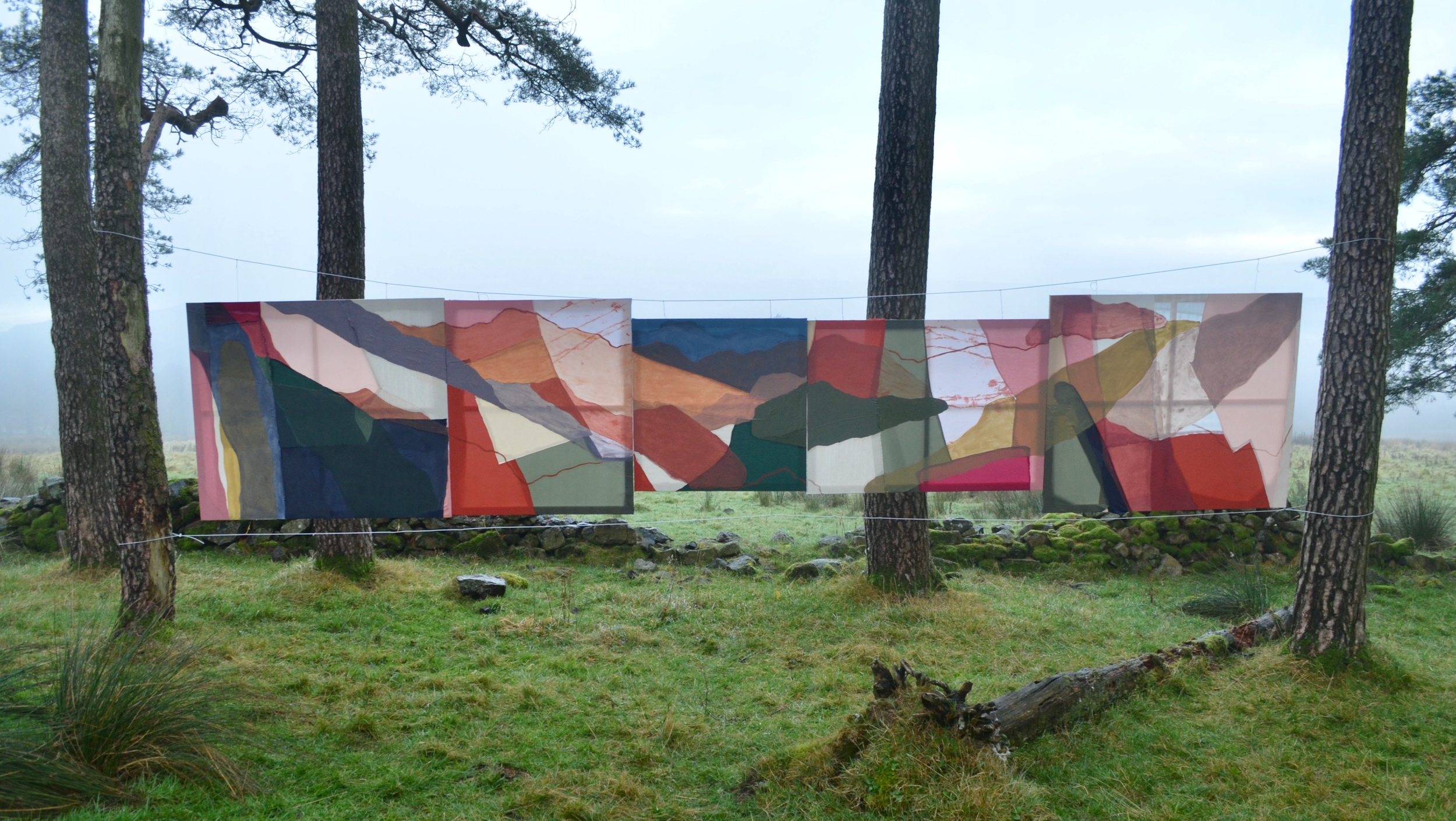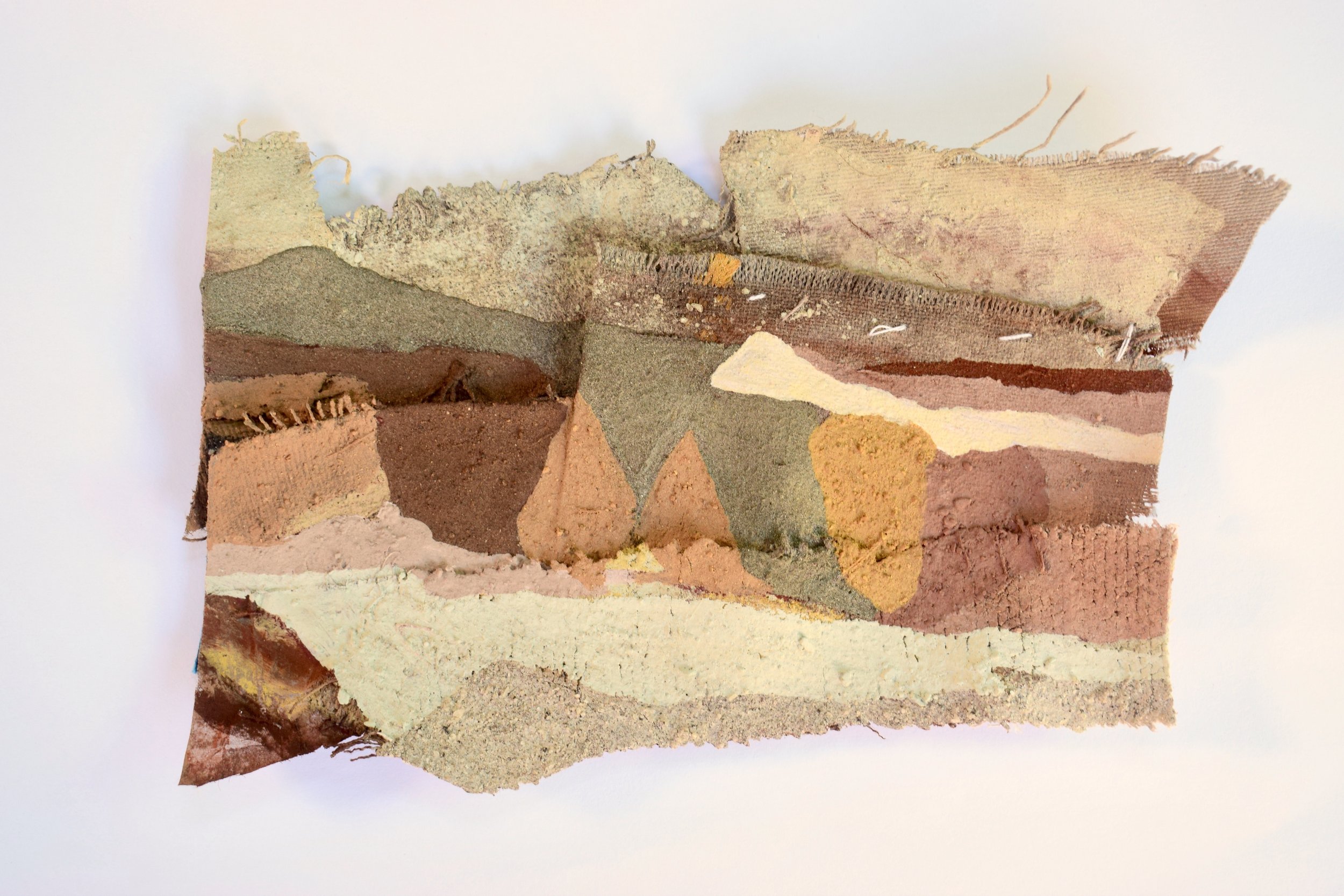
SIOBHAN MCLAUGHLIN
ABOUT THE ARTIST
Siobhan McLaughlin is an artist and freelance curator based in Glasgow. She graduated from Edinburgh College of Art in 2019, and has since received multiple awards, including the SSA Wilhelmina Barns-Graham Award at the RSA, a film commission from the Tate’s British Art Network and the VAS from One to Another Cornwall Exchange Residency.
Experiencing landscape through walking constitutes an integral aspect of Siobhan’s artistic practice. Impressions of her surroundings and her place within it are translated into paintings that comprise of sewn-together remnant materials and paint whose pigments the artist often gathers on location. Working in this way presents an interesting response to the question of energy ethics in art making.
Just like the landscapes she takes inspiration from, Siobhan’s paintings are the result of slow, multi-layered processes in which human and environmental histories are entangled. Given her artistic practice, and the scale of many of her works, the physical components of Siobhan's artistic practice feel tangible. Yet ever since a pedestrian accident, working in this way has come at the cost of physical discomfort and adversity which contrasts with conventional understandings of healing in nature and art.
In addition to her career as a visual artist, Siobhan has also curated the highly acclaimed centenary retrospective of Scottish artist Alan Davie, and more recently the group exhibition Scottish Landscapes: A New Generation, both at Dovecot Studios in Edinburgh.
ABOUT THE TALK
For the final talk in part 3 of our series, we invited Siobhan McLaughlin and author Amy Liptrot to join us in conversation. Both share an approach to the Scottish landscape that is very personal without romanticising it: humans are part of nature’s fabric, and their experiences link places that can be far or close. Whereas Siobhan sews together remnant materials which function as the picture plane to her abstract landscape paintings, in The Outrun, Amy and her story become the connecting link between the skyscrapers in London and the cliffs of windy Orkney, where she grew up. This is further highlighted when Amy speaks of her personal geography, which contrasts conventional analogies that have traditionally asserted conquest of both female bodies and natural landscapes - in Amy’s writing, it transforms into a way of connecting and grounding. Both their work speaks to a distinct sense of place that feels approachable and down to earth. Meanwhile, it encourages to explore care, healing and regeneration as a challenging process, contrasting - in many ways - immediate gratification.
WATCH THE FULL RECORDING OF SIOBHAN’S
TALK BELOW






